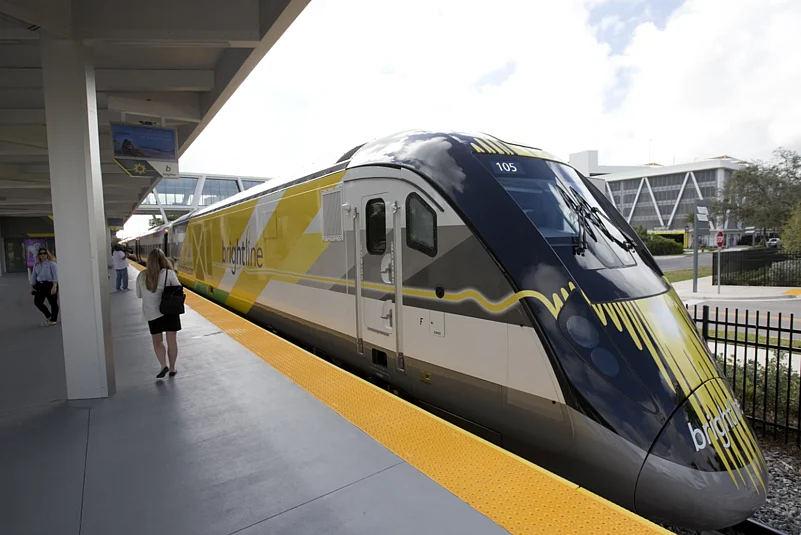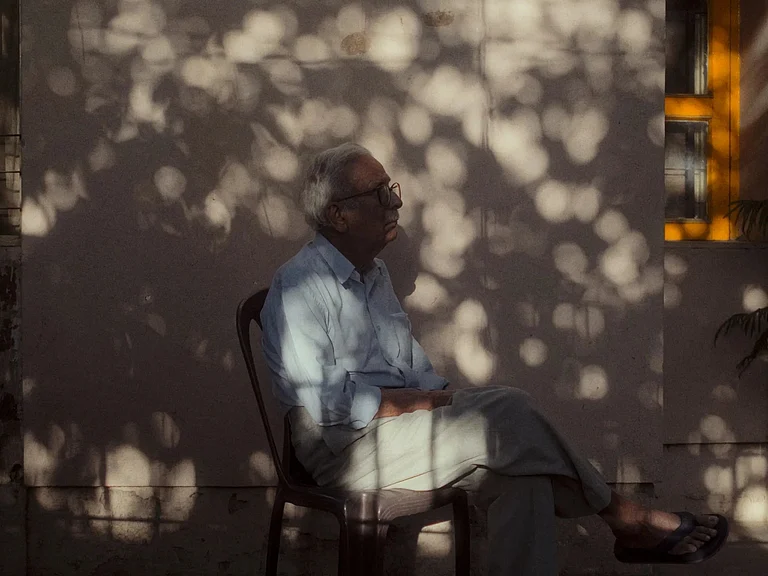Construction is poised to commence on Monday for a groundbreaking $12 billion high-speed passenger rail line connecting Las Vegas to the bustling Los Angeles area. Anticipating a surge in commuters, officials are forecasting millions of travelers to hop aboard trains by the year 2028.
Brightline West, a company affiliated with the entity already operating a swift train service between Miami and Orlando in Florida, is spearheading the endeavor. The plan entails laying down 218 miles (351 kilometers) of fresh tracks, stretching from a newly constructed terminal situated just south of the renowned Las Vegas Strip to another state-of-the-art facility in Rancho Cucamonga, California. The majority of the route will be nestled in the median of Interstate 15, with a designated stop in the Victorville area of San Bernardino County.
Wes Edens, the founder and Chairperson of Brightline Holdings, hailed this moment as "the foundation for a new industry" in a recent statement. Edens emphasized Brightline's ambition to connect cities across the United States that are too close for air travel yet too far for efficient road trips.
CEO Mike Reininger has set the ambitious target of having trains operational in time for the 2028 Summer Olympics in Los Angeles.
U.S. Transportation Secretary Pete Buttigieg is slated to participate in Monday's groundbreaking ceremony. Brightline secured substantial backing from the Biden administration, including a $3 billion grant from federal infrastructure funds, along with approval to issue $2.5 billion in tax-exempt bonds. Additionally, the company obtained authorization in 2020 to sell $1 billion in similar bonds.
Touted as the nation's inaugural true high-speed passenger rail line, the project aims to achieve speeds of up to 186 mph (300 kph), akin to Japan's renowned Shinkansen bullet trains.
The proposed route between Las Vegas and Los Angeles primarily traverses open terrain, with Interstate 15 being the predominant thoroughfare. The Southern California terminal of Brightline will integrate with a commuter rail network leading to downtown Los Angeles.
Projections indicate that electric-powered trains will slash the journey time across the Mojave Desert from four hours to a little over two hours. Forecasts anticipate approximately 11 million one-way passengers annually, or roughly 30,000 per day, with fares expected to be significantly lower than air travel costs. The trains will offer amenities such as restrooms, Wi-Fi, food and beverage services, and the convenience of luggage check-in.
Las Vegas, a magnet for Southern Californian travelers, often experiences heavy traffic congestion on Interstate 15, particularly during weekends. The introduction of the high-speed rail line is anticipated to alleviate this strain, offering an alternative mode of transportation.
With the Las Vegas metropolitan area rapidly approaching a population of 3 million and attracting over 40 million visitors annually, the demand for efficient transportation options continues to escalate. Passenger traffic at the city's Harry Reid International Airport surged to a record 57.6 million in 2023, while over 44,000 vehicles per day crossed the California-Nevada state line on Interstate 15 in the same year.
Brightline Holdings, headquartered in Florida, already operates a successful Miami-to-Orlando line, featuring trains reaching speeds of up to 125 mph (200 kph). Launched in 2018, the service expanded to Orlando International Airport last September, offering 16 round-trips per day with one-way tickets priced at approximately $80 for the 235-mile (378-kilometer) journey.
While high-speed rail initiatives linking various U.S. cities have been proposed in recent years, many have encountered delays. In California, a voter-approved plan in 2008 for a 500-mile (805-kilometer) rail line between Los Angeles and San Francisco has been hindered by escalating costs and routing disputes. As of a 2022 business plan by the California High-Speed Rail Authority, projected costs have soared to $105 billion.


























